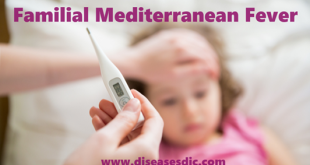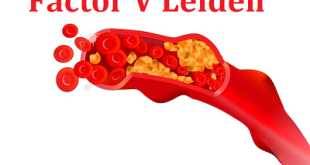Definition
Familial hypercholesterolemia is a common life-threatening genetic condition that causes high cholesterol. Untreated, FH leads to early heart attacks and heart disease. People with FH have a high amount of low density lipoprotein (LDL) or “bad cholesterol” due to a mutation in one of the genes that controls the way cholesterol is cleared by the body. As a result, cholesterol accumulates in the bloodstream and can ultimately build up in the walls of the arteries. Cholesterol build-up in the artery wall is called hardening of the arteries, or atherosclerosis, and can lead to problems such as heart attacks and strokes in young adults and even children.
FH is inherited and passed down through families. When one individual with FH is diagnosed, it is important that all family members are screened for FH. Treatment should begin early. Although lifestyle and diet are important factors to staying heart healthy, for individuals with FH, that is not enough
Epidemiology
FH is more common than once thought. The literature used in this meta-analysis has shown the prevalence of FH in the general population to have increased from 0.17% of 419,000 persons in 2012 to 0.30% of 10.9 million in 2018. Clearly the increase is related to the number of studies, none of which used the definition of a point mutation in LDLR, PCSK9, or APOB. There are many population genetic studies demonstrating the inadequacy of the Simon Broome and Dutch Lipid Clinic criteria. Genetic studies are considered research by many insurance carriers, and until recently, HeFH with a low-density lipoprotein cholesterol (LDL-C) of 130-160 mg/dl was unheard of, but is not uncommon in the offspring of persons with the HeFH mutation.
Types of Familial hypercholesterolemia
There are two different kinds of FH, based on whether a variant gene copy is inherited from just one parent or both. The latter is very rare.
Heterozygous familial hypercholesterolemia (HeFH) – A person inherits a gene variant from one parent with the condition. Most people with FH have this type of the disease. Children with HeFH usually have LDL cholesterol levels greater than 130 mg/dL and adults greater than 190 mg/dL. LDL levels should ideally be less than 110 mg/dL in kids and less than 100 mg/dL in adults.
Homozygous familial hypercholesterolemia (HoFH) – A person inherits genetic variants from both parents, who both have the disorder. People with this rare type of FH usually have LDL cholesterol levels greater than 300 mg/dL for adults and above 400-500 mg/dL for children are at increased risk for heart attacks and coronary artery disease at a very young age. In general, HoFH must be treated earlier and more aggressively than HeFH.
Familial hypercholesterolemia risk factors
Conditions that high LDL cholesterol may contribute to include:
- Atherosclerosis
- Carotid artery disease
- Heart disease
- Heart attack
- Stroke
Several risk factors may be linked with high LDL cholesterol, including family history, age, gender, and health conditions, and behaviours.
Family history
Shared genes, together with environment and lifestyle, may influence a person’s risk of increased LDL cholesterol levels, along with other conditions such as heart disease.
Age and gender
As people get older, cholesterol naturally builds up as the body is no longer as efficient at clearing it. In general, males have lower levels of HDL cholesterol, and females have lower levels of LDL cholesterol until they reach menopause or are about age 55.
Health conditions
Health factors that could increase LDL cholesterol include:
- Previous high LDL cholesterol
- Type 2 diabetes
- Obesity
- Familial hypercholesterolemia
Behaviors
Certain behaviors may also increase the risk of developing high LDL cholesterol, such as not being active or eating foods high in saturated and trans fats.
If a person is concerned their LDL cholesterol may be too high, they should speak with their doctor.
Causes of familial hypercholesterolemia
Familial Hypercholesterolemia is caused by mutation (defective gene) in the LDL receptor gene (LDLR) on chromosome 19. The defect prevents the body from removing LDL cholesterol from the bloodstream. The disorder is autosomal dominant, meaning that an individual can have the condition, even if only one parent has the mutated gene
Cholesterol is normally removed from the blood by the liver, using Low Density Lipoprotein (LDL) receptors. Each individual has two genes that are responsible for making the LDL receptors; one received from their father and the other from the mother
In a person with Heterozygous FH, an abnormal gene is passed on from one parent (who has FH) and a normal gene from the other parent (who does not have FH). Therefore, one half of the LDL receptors do not function properly, while the other half are normal
Since, half the receptors do not remove the cholesterol normally, blood cholesterol levels increase. This result in consistently high levels of LDL in the blood, leading to atherosclerosis (narrowing of arteries) at an early age, causing heart attacks at a young age. There is also an increased deposit of cholesterol in other tissues, like the skin and tendons
Rarely, both parents may pass a defective gene to the child. When this occurs, the condition is called Homozygous FH. The increase in cholesterol levels is much more severe in such cases. This greatly increases the risk for heart attacks and heart diseases, at a very early age, like even during childhood.
Symptoms of familial hypercholesterolemia
Familial hypercholesterolemia is a progressive disease and symptoms may not be present in the beginning. As the condition progresses, patients may notice the following symptoms:
- Chest pain (angina)
- Coronary artery disease
- Fatty deposits around the body (xanthomas)
- Cholesterol deposits on the eyelid (xanthelasmas)
- Sores on the toes that do not heal
Discrete clinical manifestations of familial hypercholesterolemia. A. Corneal arcus and xanthelasma; B. Extensor tendon xanthomas; C & D. Achilles tendon xanthomas.
Other symptoms are similar to those of a sudden stroke and may include:
- Difficulty speaking
- Weakness in one arm or leg
- Facial drooping on one side
- Loss of balance
Complications of familial hypercholesterolemia
Possible complications of FH include:
- A heart attack at an early age
- Severe heart disease
- Long term atherosclerosis
- A stroke
- Death due to heart disease at a young age
Diagnosis and test
Your healthcare provider can make a familial hypercholesterolemia diagnosis based on:
- Unusually high LDL levels.
- A history of coronary artery disease in your family or yourself at a young age.
- Symptoms linked to atherosclerosis at a younger age than usual.
- DNA test results.
What tests will be done to diagnose familial hypercholesterolemia?
Two tests can help your provider make a familial hypercholesterolemia diagnosis.
- Your provider will want to do a lipid panel blood test to measure your cholesterol. Children with familial hypercholesterolemia can have LDL levels higher than 160 mg/dL. Adults can have LDL of 190 mg/dL or higher. In people with the severe form, homozygous familial hypercholesterolemia, LDL can be higher than 400 mg/dL. For all ages, a healthy LDL level is less than 100 mg/dL.
- A DNA test can find problems with one of the three genes that can cause FH.
After you get an FH diagnosis, you may need to see your provider regularly to check on your cardiovascular health.
Treatment and medications
There is no cure for familial hypercholesterolaemia. Treatment aims to reduce the person’s risk of coronary artery disease and heart attack, and may include:
Dietary changes – Recommended dietary changes include reduced intake of saturated fats and cholesterol-rich foods, and increased intake of fibre. Modifying the diet is usually the first line of treatment. After three months, test results will show whether more aggressive treatment is needed.
Plant sterols and stanols – These substances are structurally similar to cholesterol, but aren’t absorbed by the cells. Studies show that increasing the intake of plant sterols and stanols can substantially reduce blood cholesterol. Sources include corn, rice, vegetable oils and nuts.
Exercise – Regular exercise has been shown to reduce blood cholesterol levels. Any exercise program should be supervised by your doctor.
Weight loss – Obesity is a risk factor. Maintaining a healthy weight for your height can reduce your risk of coronary artery disease and heart attack.
Avoid smoking – Cigarette smoke encourages cholesterol to ‘stick’ to artery walls. Quitting can significantly reduce your risk of heart attack.
Medication – Very few people with familial hypercholesterolaemia will be able to reduce their cholesterol levels by diet and lifestyle changes alone. Most will need special cholesterol-lowering drugs.
Prevention
FH is inherited so it cannot be prevented. However, with early detection and careful management, which usually includes cholesterol-lowering medication, people with FH can lead long and fulfilling lives.
 Diseases Treatments Dictionary This is complete solution to read all diseases treatments Which covers Prevention, Causes, Symptoms, Medical Terms, Drugs, Prescription, Natural Remedies with cures and Treatments. Most of the common diseases were listed in names, split with categories.
Diseases Treatments Dictionary This is complete solution to read all diseases treatments Which covers Prevention, Causes, Symptoms, Medical Terms, Drugs, Prescription, Natural Remedies with cures and Treatments. Most of the common diseases were listed in names, split with categories.








Is there any symptom of high LDL ..?
Typically, high cholesterol (LDL) doesn’t cause any symptoms until it causes a medical emergency, like a heart attack or stroke. These heart-disease-related events don’t occur until high cholesterol levels have led to fatty plaque building up in the arteries. In turn, this leads to a narrowing of the arteries and a change in the makeup of the arterial lining, also known as heart disease.